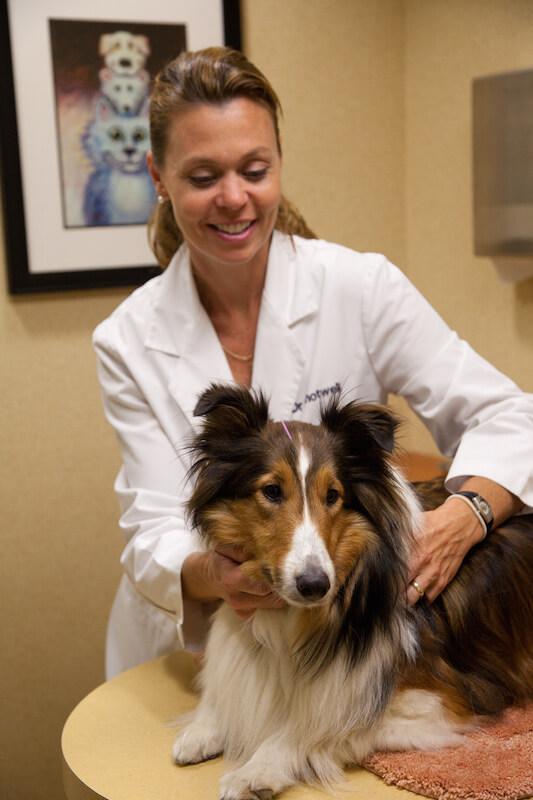
The Drake Center offers many different approaches to medical care. Complementary therapies are recommended based upon conventional diagnostic methods as well as traditional Chinese medical pattern diagnosis. They can be used as stand-alone treatments or combined with conventional Western therapies.
Our complementary services include:
- A wide range of nutraceutical products, including joint supplements, probiotics and antioxidants
- Laser therapy to help with conditions such as orthopedic injuries, arthritis and wound management
- Acupuncture to aid in pain management as well as a wide range of metabolic diseases and physiologic imbalances
- Chinese herbal and nutritional consultations
Introduction to traditional Chinese veterinary medicine (TCVM)
Chinese medicine is an independent, coherent system of thought and practice that has been developed over two millennia. Traditional Chinese veterinary medicine (TCVM) is based on the concept of balance using acupuncture, herbal medicine, massage, food therapy and Qigong.
Western medicine and Chinese medicine have the same goals — to promote health and prevent and treat disease — but they simply have two different means to an end. Western medicine emphasizes control, whereas Eastern medicine emphasizes balance. Western medicine is mechanistic, while Eastern is energetic.
In Chinese medicine, diagnosis is made through recognition of “patterns” that indicate areas of imbalance within the body. The goal of therapy is to restore the underlying balance. In order to restore this balance, we must understand the relationships between the organs and the nutritive substances, blood and energetic substances, or Qi.
All structures and functions within the body are described as having Yin or Yang characteristics. The Yin-Yang theory is important to understanding the model upon which TCVM is built. It is the balance between the Yin and Yang functions that maintain balance within the body. The Yin-Yang theory describes complementary opposites. Yin and Yang are labels used to describe how things function in relation to one another. Yin functions cool the body, nourish and moisten the organs and tissues and provide rest. Yang functions warm the body, transport body fluids, transform food and drink, hold in blood and body fluids and provide energy and activity.
You can not have Yin without Yang because their qualities are understood only in relationship to one another. For example, it would be difficult to understand cool without knowing warm. Even though they are opposites, Yin and Yang are also interdependent. Our bodies and environment are constantly changing, so Yin-Yang balance must occur in these fields. When there is an imbalance in the body or environment, recognizable patterns — and eventually, disease — will occur.

